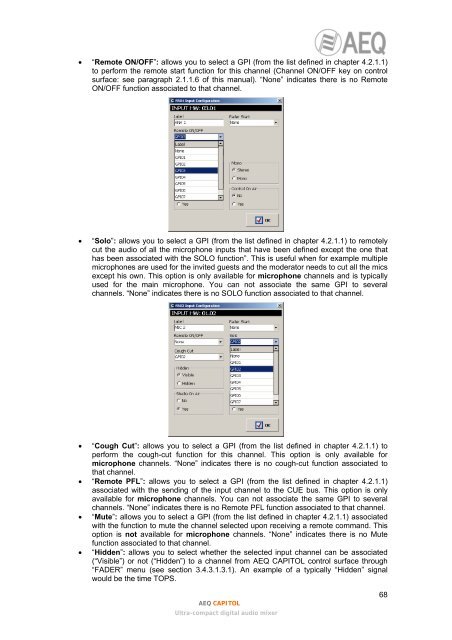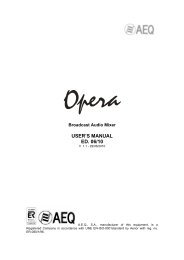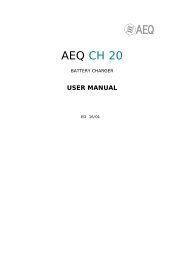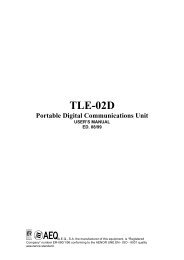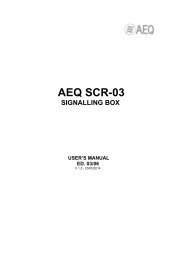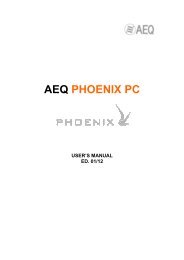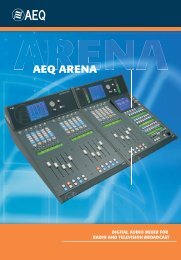Manual - AEQ International
Manual - AEQ International
Manual - AEQ International
Create successful ePaper yourself
Turn your PDF publications into a flip-book with our unique Google optimized e-Paper software.
• “Remote ON/OFF”: allows you to select a GPI (from the list defined in chapter 4.2.1.1)to perform the remote start function for this channel (Channel ON/OFF key on controlsurface: see paragraph 2.1.1.6 of this manual). “None” indicates there is no RemoteON/OFF function associated to that channel.• “Solo”: allows you to select a GPI (from the list defined in chapter 4.2.1.1) to remotelycut the audio of all the microphone inputs that have been defined except the one thathas been associated with the SOLO function”. This is useful when for example multiplemicrophones are used for the invited guests and the moderator needs to cut all the micsexcept his own. This option is only available for microphone channels and is typicallyused for the main microphone. You can not associate the same GPI to severalchannels. “None” indicates there is no SOLO function associated to that channel.• “Cough Cut”: allows you to select a GPI (from the list defined in chapter 4.2.1.1) toperform the cough-cut function for this channel. This option is only available formicrophone channels. “None” indicates there is no cough-cut function associated tothat channel.• “Remote PFL”: allows you to select a GPI (from the list defined in chapter 4.2.1.1)associated with the sending of the input channel to the CUE bus. This option is onlyavailable for microphone channels. You can not associate the same GPI to severalchannels. “None” indicates there is no Remote PFL function associated to that channel.• “Mute”: allows you to select a GPI (from the list defined in chapter 4.2.1.1) associatedwith the function to mute the channel selected upon receiving a remote command. Thisoption is not available for microphone channels. “None” indicates there is no Mutefunction associated to that channel.• “Hidden”: allows you to select whether the selected input channel can be associated(“Visible”) or not (“Hidden”) to a channel from <strong>AEQ</strong> CAPITOL control surface through“FADER” menu (see section 3.4.3.1.3.1). An example of a typically “Hidden” signalwould be the time TOPS.<strong>AEQ</strong> CAPITOLUltra-compact digital audio mixer68


